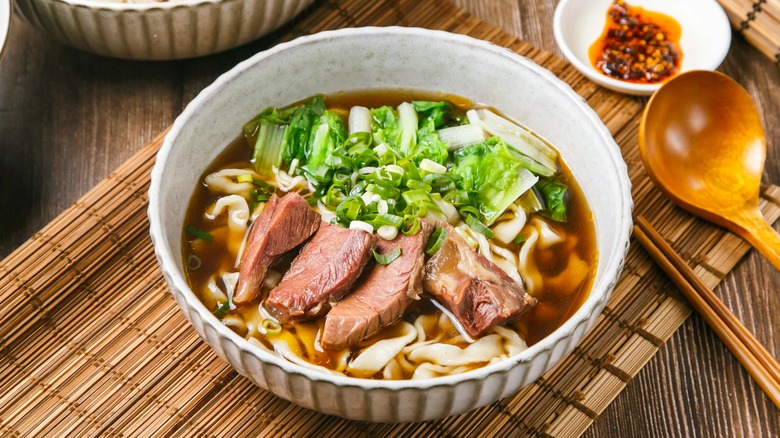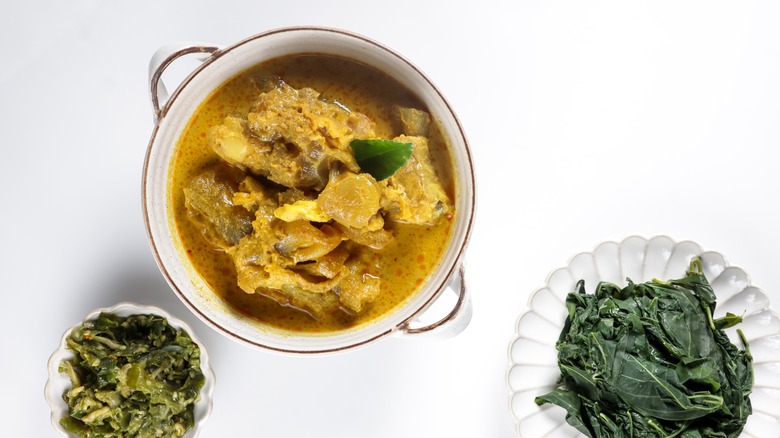The 2-Step Prep Process You Need To Cook Beef Tendon
We may receive a commission on purchases made from links.
If you haven't cooked beef tendon before, you might be put off by its white color and firm texture, which has little resemblance to regular cuts of meat. However, its rich flavor is worth making the effort — just be mindful to rinse and blanch it first before following your recipe to remove any beefy odors.
Beef tendon is the connective tissue that links a cow's muscles to its bone. While it doesn't contain bone itself, it does have a firm, fibrous texture, because it needs to be strong enough to provide mechanical support to the bones as the animal's muscles contract. It's also packed full of collagen, which is tough and inelastic in its natural state. However, when cooked low and slow, the collagen in beef tendon miraculously softens, taking on a gelatinous texture (some say it has a similar texture to pork belly), much like the way chicken feet and pig trotters become tender after a lengthy simmer.
Beef tendon can have a strong beefy aroma, veering on gamey, which can deter people from cooking it. However, you can combat this issue by rinsing your tendons in cold water and blanching them for three minutes. Then you can give them an additional rinse after boiling to wash off any unpleasant residues on the surface. After this quick two-step process, cook your tendons as normal, either via a slow cook for a gelatinous textured protein or a speedy deep fry to create a crunchy snack.
Braised beef tendon is tender and versatile
Simmering your beef tendon for a minimum of four hours, after you've rinsed and plunged them in hot water, will break down the collagen in its structure, turning it almost jelly-like depending on how long you braise it (a pressure cooker is a great investment that helps to halve cooking times). If you prefer your tendon to have a chewier texture, simply remove it from the braising liquid while it still has some bite.
Afterward, you should be left with two versatile ingredients: beef tendon that has an unctuous consistency and is perfect for adding to Vietnamese pho or Indonesian Gulai Kikil, and a beefy collagen-packed broth full of aroma and flavor that can be used as a base for complex stews and soups. If you prefer, you can steam beef tendon instead of braising it. Once cooked and cooled, slice it into strips and toss it into a spicy, salty marinade. The deliciously meaty nuggets will soak up the dressing and become almost plump, transforming them into the perfect high-protein topping for a salad.
Another gelatinous protein that has a similar texture to beef tendon and is awesome at imbibing surrounding flavors is sea cucumber. Again used predominantly in Asian cookery, this unusual-looking sea creature has a delicate consistency but still retains its shape in stir-fries.

